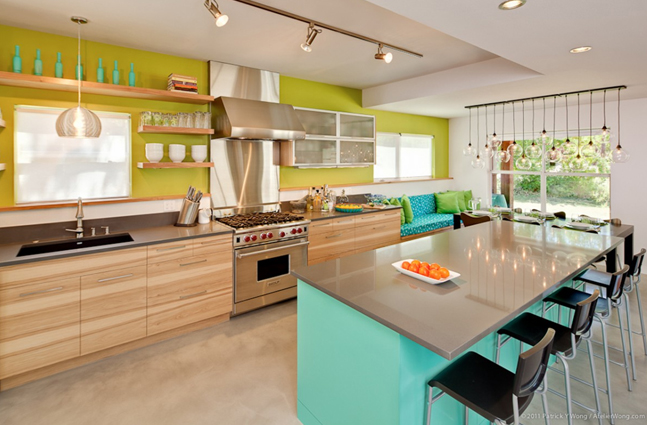Decorating Ideas – Using Colour Block Decorating
Colour blocking is a simple and effective way of adding vibrancy and a sense of energy to your home’s interior. What began as a popular technique with clothes designers in the sixties has since come back into use in the fashion industry and has now been taken up by interior designers. Essentially, colour blocking is the use of no more than three colours in a single space. The colours must be bold, solid and contrasting. It is the very contrast between these solid blocks of colour – be they the walls, floor or large pieces of furniture – that creates such a striking and fresh impression in a modern interior. Here is a guide to colour blocking and how to use it effectively in your home.
Basic colour blocking
This is the classic approach to colour blocking, and it works very well in a home design that wants to emphasise simplicity and openness. In basic colour blocking, use two or more primary colours, or two or more secondary colours. The important thing is not to mix primary and secondary colours; it should be one or the other. It can be a little difficult for the non-professional to know exactly which two or three shades will contrast together to create a vibrant look, rather than clash together in a garish mess. A colour wheel can prove an invaluable tool in helping you to understand which colours to use.

Complementary colour blocking
As a general rule, colours that are opposite each other on the colour wheel will create a bold contrast, for example, orange and blue. Using opposing shades in this way is sometimes referred to as complementary colour blocking. By using the complement function on this digital wheel, it is possible to see the kinds of colours that will complement each other well in an interior. For example, yellow/green sits opposite red/purple on the wheel, and used intelligently, could create a striking contrast in an interior.
Neutral colour blocking
 This refers to the use of blacks, whites and greys in a colour scheme. Often referred to as neutral tones, these colours or shades can be used very effectively in a colour blocking scheme. If your home design has a modern and chic look, a black and white colour scheme along with one other significant colour can be used to great effect. White is often used in colour-blocking decorating ideas as it provides an excellent base for the rest of the colour scheme. By starting with white walls, for example, you can then choose one colour family, i.e. blue-green, or pink-red, with which to decorate the room and use for accessories.
This refers to the use of blacks, whites and greys in a colour scheme. Often referred to as neutral tones, these colours or shades can be used very effectively in a colour blocking scheme. If your home design has a modern and chic look, a black and white colour scheme along with one other significant colour can be used to great effect. White is often used in colour-blocking decorating ideas as it provides an excellent base for the rest of the colour scheme. By starting with white walls, for example, you can then choose one colour family, i.e. blue-green, or pink-red, with which to decorate the room and use for accessories.
Colour blocking with accessories

The accessories and items of furniture in a room have an important role to play in any colour-blocking scheme and should be taken into consideration from the beginning of the decorating process. Surfaces like worktops and tabletops, as well as large items like bookshelves and sofas, can all be one of the major blocks of colour and should be selected with that function in mind. Decor pieces like colourful wardrobes or shelving units can be used to great effect in enhancing decorating ideas based on colour blocking.
Image resources:
- www.sarahgordonhome.co.uk
- www.homeshoppingspy.com

